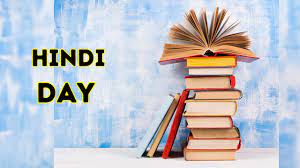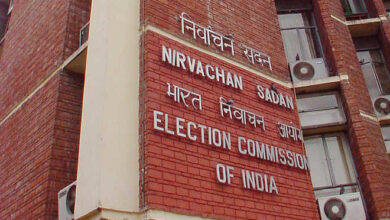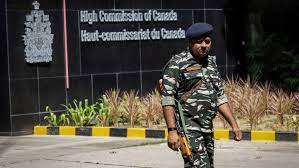Can Indians Really Speak In “One Language” In 2023?
India observes “Hindi Diwas” on September 14 each year to honor one of its 23 official languages. The dispute over whether Hindi should take precedence over other regional and federal languages continues to rage every year. This argument has arisen significantly after the BJP came to power at the capital in 2014 with Prime Minister Narendra Modi as well as key officials like Amit Shah regularly pressing for Hindi.
In his 2019 Hindi Diwas tweet, the Prime Minister praised the “simplicity, spontaneity, and elegance” of the Hindi language. Shah sparked outrage in 2021 with a tweet urging all Indians to use Hindi, which serves as both the nation’s “matribhasha” (mother tongue) and “rajbhasha” (national language). “The progress of India depends on the coexistence of the mother tongue and the national language.” The same year, Rajnath Singh, the Indian defense minister, said on Twitter that “Hindi functions as a bridge for Indians. Hindi users together have a duty to promote and use the language as much as feasible.
Such government support for Hindi and appeals for “one language” for one nation have raised concerns about linguistic imposition and the viability of having one language in a country as varied as India, which is home to hundreds of languages, dialects, and writing systems. These discussions are not new; they really go all the way back to when the country was just being started.
In actuality, “Hindi Diwas” was intended to commemorate the day when Hindi was selected as India’s “Official Language.”
The Constituent Assembly, which would later evolve into the Parliament of India, was presented with a fairly unsettling dilemma when the country attained independence in 1947.
What language would become the official language of the new nation? Should the phrase “national language” ever be used? These were challenging inquiries.
After all, there are hundreds of languages spoken in India. The Constituent Assembly took considerable time to decide. Some were in favor of making Hindi the official language, but others, particularly Southern state officials, were against it because they thought it would stifle other languages and compromise regional identity. Those who supported Hindi emphasized the necessity to get rid of colonial English from official and legal documents. Others supported “Hindustani,” which was mostly a synthesis of spoken Hindi, Urdu, and other dialects, while others argued in favor of Sanskrit.
A compromise was eventually achieved, and Hindi was designated as a “official language” rather than a “national language.” The action was intended to support and preserve regional identity, linguistic variety, and unity in difference. On September 14, 1949, the Constituent Assembly designated Hindi, written in the Devanagari script, to be the official language of India. India’s first prime minister, Jawaharlal Nehru, proclaimed the day to be “Hindi Diwas” (Hindi Day).
With his catchphrase “Hindi, Hindu, Hindustan,” VD Savarkar, the founder of Hindu nationalist thinking in India, originally promoted the concept that language serves as a symbol of religious domination and majoritarian “oneness.” Since then, conservative political figures and hardline Hindu nationalist groups like the Rashtriya Swayamsevak Sangh (RSS) have called for the adoption of Hindi as the “national language” on several occasions.
Freedom fighter and constituent assembly member RV Dhulekar made a passionate case for Hindi, stating that “People who do not know Hindustani have no right to stay in India” and that “You may belong to another nation, but I belong to the Indian nation, the Hindi Nation, the Hindu Nation, the Hindustani Nation.”
The drawback of having a national language is that it serves as the foundation for culture and civilization. It is the first location for the development of identity and is crucial for social cohesiveness as well as the many meaning-making processes that aid in the formation and definition of culture. Additionally, culture is not uniform. In actuality, culture is continuous, in flux, and developing. India cannot have “one language,” just as India cannot have “one culture.”
Shankarrao Deo, a well-known Maharashtrian freedom fighter and member of the constituent assembly, cautioned against the “cry, namely, (for) ‘one culture’ has dangerous implications” and questioned the definition of this “culture” that RSS and even Congress leaders used to support the idea of Hindu imposition.
“Today, as it is seen and comprehended, culture merely denotes the dominance of the few over the many… To me, it would mean extinguishing India’s spirit if you insisted on having just one culture.
Shyama Prasad Mukherjee, a prominent Hindu nationalist, endorsed “unity in diversity” as well.
Thus, Hindi Diwas represents the conclusion of the linguistics discussion between leaders from various social, political, and religious backgrounds who ultimately decided against altering the nation’s pluralistic structure, much to the chagrin of many. The constituent assembly ultimately decided against making Hindi the national language, but attempts to expand Hindi’s influence—for example, by making Hindi a requirement in workplaces or educational institutions—have sparked recurrent and occasionally violent agitations against Hindi imperialism, particularly in the south and east.
On the basis of its “One Nation, One Everything” philosophy, the BJP was allegedly aiming to “destroy other languages by trying to impose Hindi and make it one language,” according to Tamil Nadu Chief Minister MK Stalin last year.
In any case, the BJP has stepped up its campaign this year for its “One Nation One Election” platform, which has come under increased fire as a means of weakening India’s federal structure and ethos by undermining the states.
In light of the politically motivated socio-cultural homogenization that many members of the Hindu right-wing are now advocating, Hindi Diwas 2023 may be an occasion to revive these discussions over language. How will “one nation, one language” affect the independent identities of Indian states, which are primarily defined by linguistic distinctions?
Language is a very personal tool as well as a symbol of group identification. In a sad event last year, an 85-year-old farmer from Tamil Nadu’s Salem district named Thangavel burned himself on fire outside the DMK office in Thalaiyur to protest the imposition of the Hindi language. The incident took place after the Committee of Parliament on Official Language, chaired by Home Minister Amit Shah, recommended in October 2022 that Hindi and regional languages should be required as the medium of instruction in all technical and non-technical educational institutions, including central universities.
The Indian Institutes of Technology (IITs), Indian Institutes of Management (IIMs), and All India Institute of Medical Sciences (AIIMS) are among the technical institutes that fall under the purview of the Union government. Non-technical institutions include Kendriya Vidyalayas (KVs), Navodaya Vidyalayas (NVs), and central universities.
Thangavel hoisted a poster that said, “Modi government, central government, we don’t want Hindi,” before taking his own life. Our native speech is Tamil, and clowns speak Hindi. The life of the pupils would be impacted by the need of Hindi. Get Hindi out of here, out of here, out of here.







